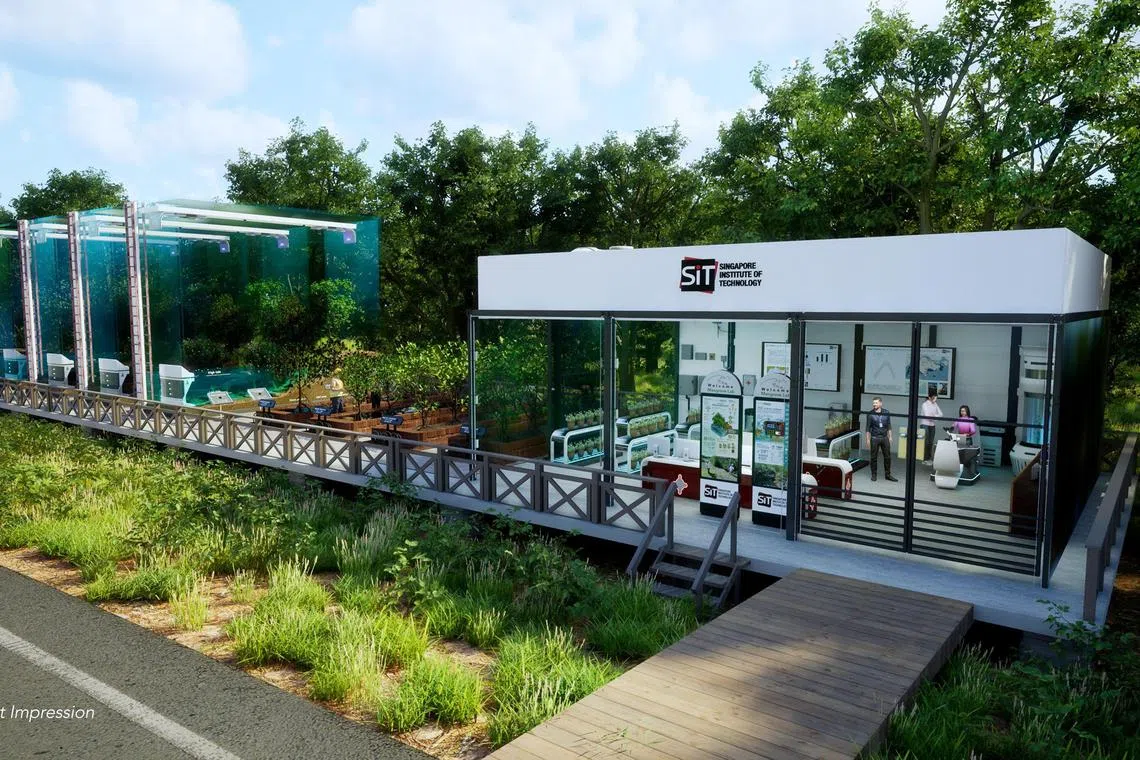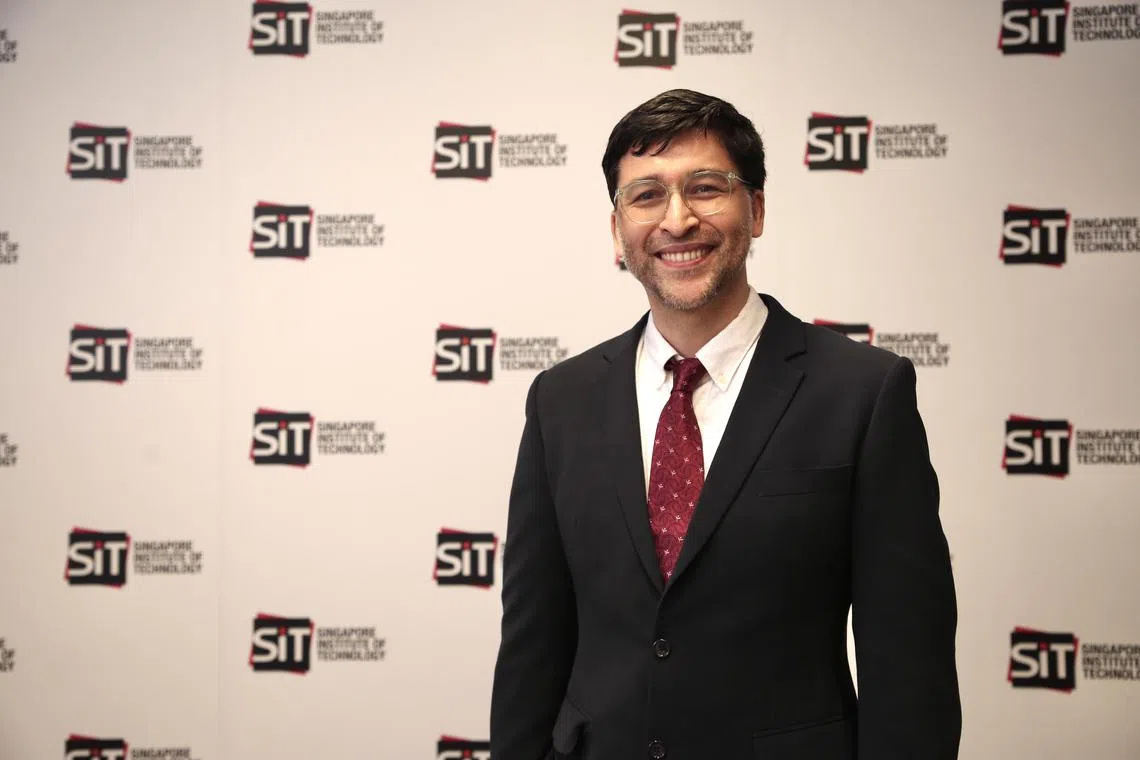New mangrove conservatory to open at Punggol Heritage Trail next to new SIT campus
Sign up now: Get ST's newsletters delivered to your inbox

The new mangrove conservatory by SIT is set to begin construction in July 2024, with an expected completion date of December 2025.
PHOTO: SINGAPORE INSTITUTE OF TECHNOLOGY
Follow topic:
SINGAPORE - As part of its plans to address the ongoing climate crisis, the Singapore Institute of Technology (SIT) intends to restore a mangrove species that had become extinct locally by transporting its seeds from Malaysia and Indonesia to Singapore.
The university will create a conservatory dedicated to preserving biodiversity, as a test bed for SIT staff and students to preserve a wide range of genetically diverse mangrove species and revive lost species, and work to reintroduce species that have disappeared from the local ecosystem.
SIT said on May 23 that it would start construction of the mangrove conservatory in July, with completion expected in December 2025. SIT is currently in discussions with the National Parks Board (NParks) to work together on the conservatory’s educational and outreach efforts.
Situated next to the upcoming Punggol Coast MRT station and SIT Punggol Campus and in the heart of JTC’s Punggol Digital District, the conservatory will be readily accessible to the public exploring the Punggol Heritage Trail.
SIT plans to restore Brownlowia argentata, a plant that grows in mangroves and classified as extinct in Singapore – a conservation status given only to species that have not been sighted in the wild for the last 30 years.
Principal investigator and project lead Cesar Jung-Harada said the species is still found in Malaysia and Indonesia, and that reintroducing the species requires care and the right environment to increase its chances of survival.

SIT Associate Professor Cesar Jung-Harada, 40, principal investigator and project lead.
PHOTO: LIANHE ZAOBAO
“Mangroves grow better with other types of trees. They are part of ecosystems, they benefit from seagrass, corals, algae, and they need animals such as mud lobsters, crabs, birds, bees and many other organisms,” said Prof Jung-Harada, who is an associate professor of design at SIT.
The SIT mangrove conservatory will combine community outreach, education and applied research.
The conservatory’s outreach centre will have a laboratory to analyse chemicals and biological materials, as well as a workshop.
The centre will allow the public to learn about various mangrove species and their vital role in environmental protection.
The conservatory plans to extend mangrove research and development efforts to ecological restoration projects on nearby Coney Island and Pulau Ubin.
These locations are set to host extensive mangrove forests, which can enhance real-world learning opportunities for students.
Naval architecture students can study the effect of sea-level rise on structures while accounting students can gain hands-on experience measuring the carbon contents of sediments and learning how to do carbon accounting.
Researchers will be able to set up experiments to help identify mangroves that can help Singapore deal with global warming and rising sea levels, and maximise carbon capture.
Mangroves act as a buffer for the coastline, as they are tree structures that hold the soil in place during storms.
Additionally, they act as sediment traps, building up land over time, which helps to counteract rising sea levels.
Mangrove habitats can store and lock carbon in the ground as they take in carbon dioxide through photosynthesis. They can store three to five times more carbon per hectare than other forest types.
The conservatory will be established over three years from 2024 with $680,000 from the Foundation of Rotary Clubs Singapore.
Mr Chew Ghim Bok, who is on the board of directors at Rotary International, said: “With the drive of Singapore Green Plan 2030 and Rotary International’s seventh area of focus, Protecting the Environment, the timing cannot be better than now.
“For Rotarians, who are ‘People of Action’, the establishment of a mangrove conservation facility at SIT is a huge opportunity for us to make a lasting impact on the world and community around us.”
Correction note: In an earlier version of the story, we said that SIT is in collaboration with NParks on the construction of the mangrove conservatory. This is incorrect. SIT is currently in discussions with NParks to work together on the conservatory’s educational and outreach efforts. We are sorry for the error.

